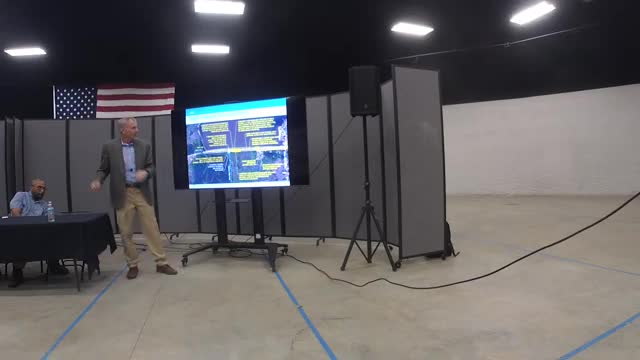Dam Rehabilitation Plan Faces $11 Million Price Tag
September 30, 2024 | Oktibbeha County, Mississippi
This article was created by AI summarizing key points discussed. AI makes mistakes, so for full details and context, please refer to the video of the full meeting. Please report any errors so we can fix them. Report an error »

In a recent government meeting, officials discussed the extensive and costly plans for upgrading a local dam to meet high hazard criteria. The proposed project includes the construction of a large auxiliary spillway and significant modifications to existing infrastructure, with an estimated total cost of approximately $11 million.
Key components of the project involve the installation of a 36-foot wide riser, which is noted to be the largest of its kind encountered by the National Resources Conservation Service (NRCS). The design also includes a new conduit, which will be slightly smaller than the current one, and aims to utilize existing materials where possible to mitigate costs.
The meeting highlighted the importance of ensuring that the dam can safely manage water flow during extreme weather events. Officials outlined three primary pathways for water to navigate around the dam: through the primary spillway, the auxiliary spillway, and over the dam itself, which is considered a last resort.
Concerns were raised regarding the potential impact of raising the dam's elevation by two feet, particularly on upstream residents. However, it was determined that no homes would be affected, although some property owners might face challenges in emergency situations.
The discussion also touched on sediment management, with plans to excavate approximately 100 acres of sediment from the reservoir, a process expected to cost around $1 million. The meeting underscored the necessity of adhering to NRCS requirements for sediment pools, which were not included in the original design.
In addition to the high hazard rehabilitation, officials explored a significant hazard rehabilitation option that would maintain the current elevation of the dam. This alternative would involve repairing the upstream and downstream slopes and potentially relocating or raising homes in the flood inundation area, affecting several local residents.
Overall, the meeting emphasized the complexity and financial implications of the dam upgrade project, with officials committed to refining cost estimates and determining the most viable alternative moving forward.
Key components of the project involve the installation of a 36-foot wide riser, which is noted to be the largest of its kind encountered by the National Resources Conservation Service (NRCS). The design also includes a new conduit, which will be slightly smaller than the current one, and aims to utilize existing materials where possible to mitigate costs.
The meeting highlighted the importance of ensuring that the dam can safely manage water flow during extreme weather events. Officials outlined three primary pathways for water to navigate around the dam: through the primary spillway, the auxiliary spillway, and over the dam itself, which is considered a last resort.
Concerns were raised regarding the potential impact of raising the dam's elevation by two feet, particularly on upstream residents. However, it was determined that no homes would be affected, although some property owners might face challenges in emergency situations.
The discussion also touched on sediment management, with plans to excavate approximately 100 acres of sediment from the reservoir, a process expected to cost around $1 million. The meeting underscored the necessity of adhering to NRCS requirements for sediment pools, which were not included in the original design.
In addition to the high hazard rehabilitation, officials explored a significant hazard rehabilitation option that would maintain the current elevation of the dam. This alternative would involve repairing the upstream and downstream slopes and potentially relocating or raising homes in the flood inundation area, affecting several local residents.
Overall, the meeting emphasized the complexity and financial implications of the dam upgrade project, with officials committed to refining cost estimates and determining the most viable alternative moving forward.
View full meeting
This article is based on a recent meeting—watch the full video and explore the complete transcript for deeper insights into the discussion.
View full meeting
